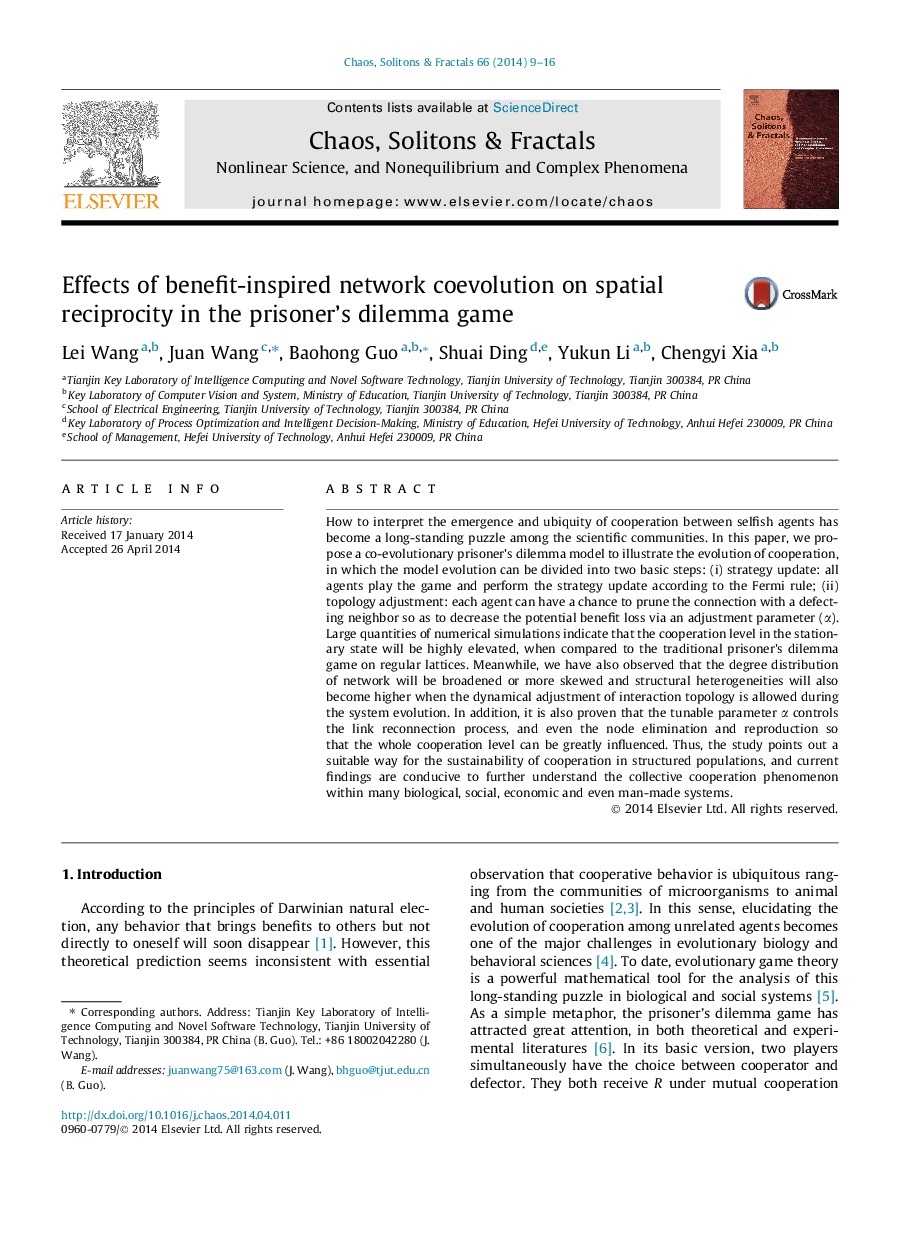| Article ID | Journal | Published Year | Pages | File Type |
|---|---|---|---|---|
| 8255005 | Chaos, Solitons & Fractals | 2014 | 8 Pages |
Abstract
How to interpret the emergence and ubiquity of cooperation between selfish agents has become a long-standing puzzle among the scientific communities. In this paper, we propose a co-evolutionary prisoner's dilemma model to illustrate the evolution of cooperation, in which the model evolution can be divided into two basic steps: (i) strategy update: all agents play the game and perform the strategy update according to the Fermi rule; (ii) topology adjustment: each agent can have a chance to prune the connection with a defecting neighbor so as to decrease the potential benefit loss via an adjustment parameter (α). Large quantities of numerical simulations indicate that the cooperation level in the stationary state will be highly elevated, when compared to the traditional prisoner's dilemma game on regular lattices. Meanwhile, we have also observed that the degree distribution of network will be broadened or more skewed and structural heterogeneities will also become higher when the dynamical adjustment of interaction topology is allowed during the system evolution. In addition, it is also proven that the tunable parameter α controls the link reconnection process, and even the node elimination and reproduction so that the whole cooperation level can be greatly influenced. Thus, the study points out a suitable way for the sustainability of cooperation in structured populations, and current findings are conducive to further understand the collective cooperation phenomenon within many biological, social, economic and even man-made systems.
Related Topics
Physical Sciences and Engineering
Physics and Astronomy
Statistical and Nonlinear Physics
Authors
Lei Wang, Juan Wang, Baohong Guo, Shuai Ding, Yukun Li, Chengyi Xia,
